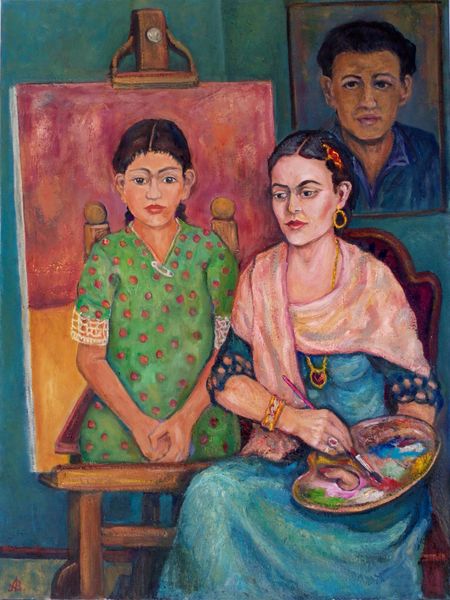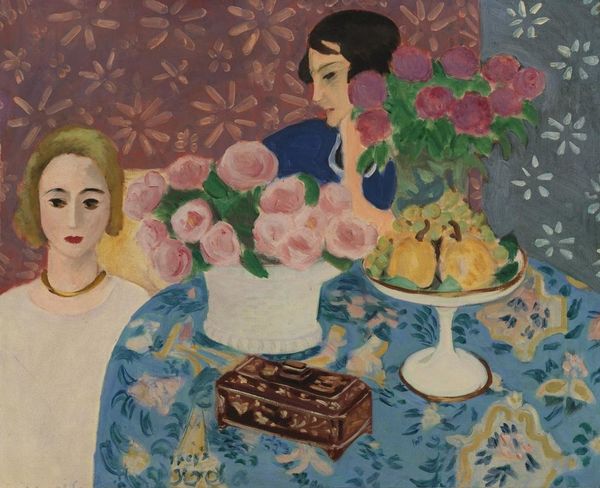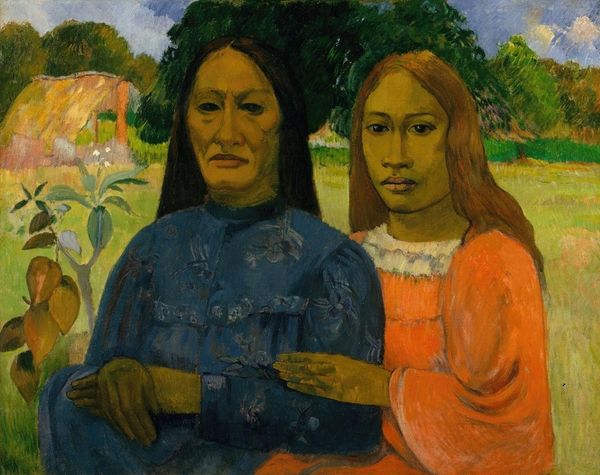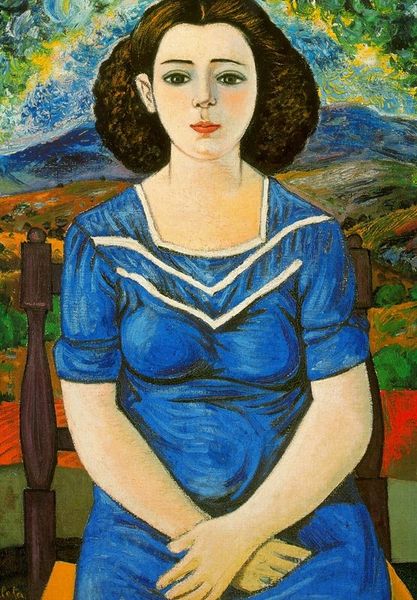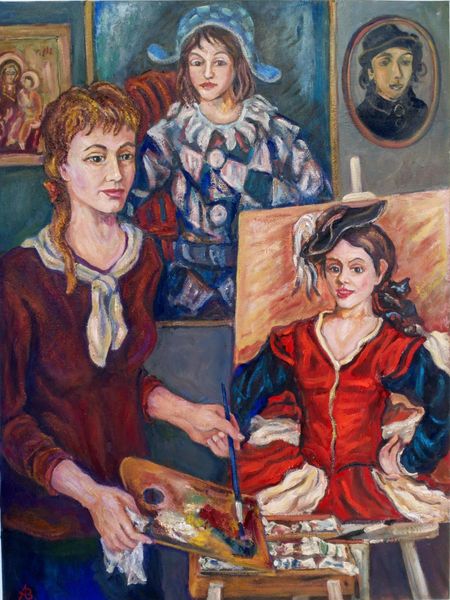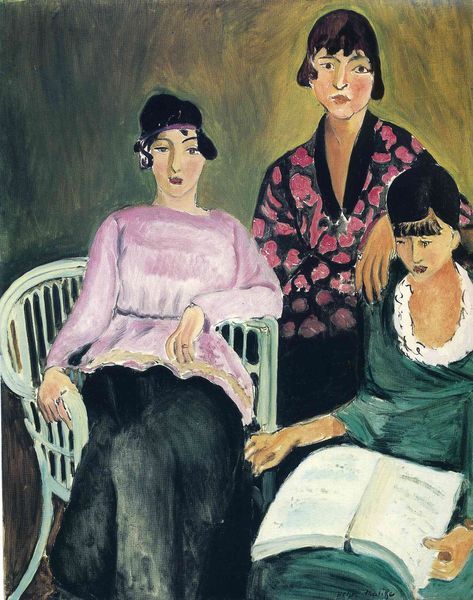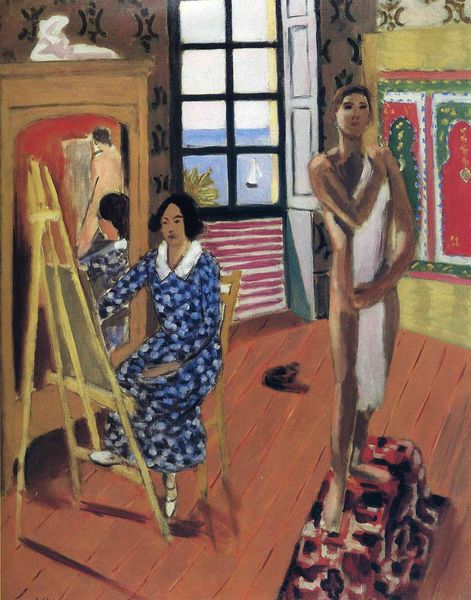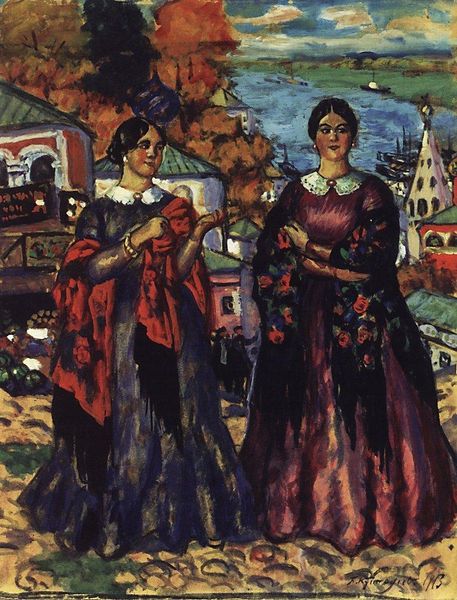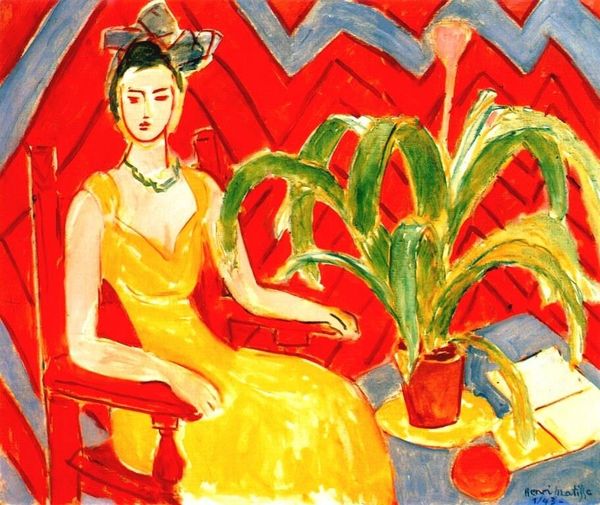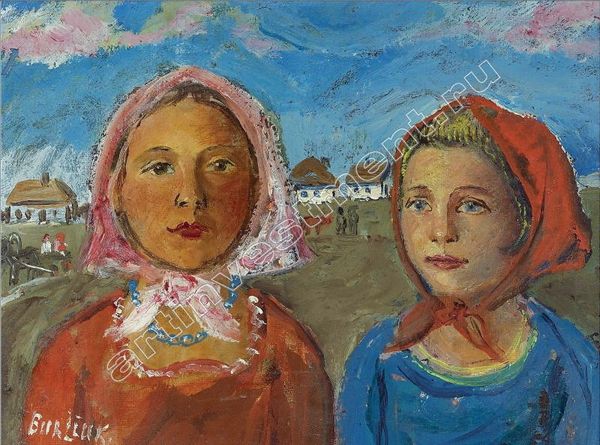
painting, oil-paint
#
portrait
#
painting
#
oil-paint
#
group-portraits
#
naive art
#
genre-painting
#
portrait art
#
modernism
Copyright: Alberto da Veiga Guignard,Fair Use
Editor: Alberto da Veiga Guignard’s “As Gêmeas,” painted around 1940 using oil on canvas, portrays twin sisters in a very formal setting. I find the backdrop, the urban landscape, particularly striking. How does the social context influence your reading of this portrait? Curator: Well, thinking historically, the very act of commissioning a formal portrait like this speaks to a certain social standing and a desire for public representation. The precise depiction of the city behind them embeds them in a specific cultural landscape. Consider how, in 1940s Brazil, rapid urbanization was impacting social structures and identity. Could this painting be interpreted as an attempt to capture a sense of rootedness amidst change, defining identity through place and familial connection? Editor: That makes a lot of sense. It's almost as if they're not just individuals, but also symbols of a community. I wonder about the choice of background. Why showcase the urban sprawl so prominently? Curator: The inclusion of the city could signal their connection to modernization while still maintaining tradition. The artwork, then, becomes an intersection. Look at how the 'naive art' style affects the viewers; does it enhance the reading as 'authentic', tying the sisters and their family to Brazilian heritage and visual culture? Or is it Guignard consciously framing their social position? Editor: I hadn't considered that. It really highlights the complex relationship between individual identity, cultural heritage, and social forces at play in Guignard's work. Curator: Exactly. And these dynamics inform the evolving role of art and its connection to social commentary within museums and galleries alike. Editor: This conversation really helped me see past the surface of this piece and consider it as a historical and cultural statement. Thank you! Curator: My pleasure. Considering all these layers of historical context enriches how we understand, and curate, these powerful works.
Comments
No comments
Be the first to comment and join the conversation on the ultimate creative platform.
